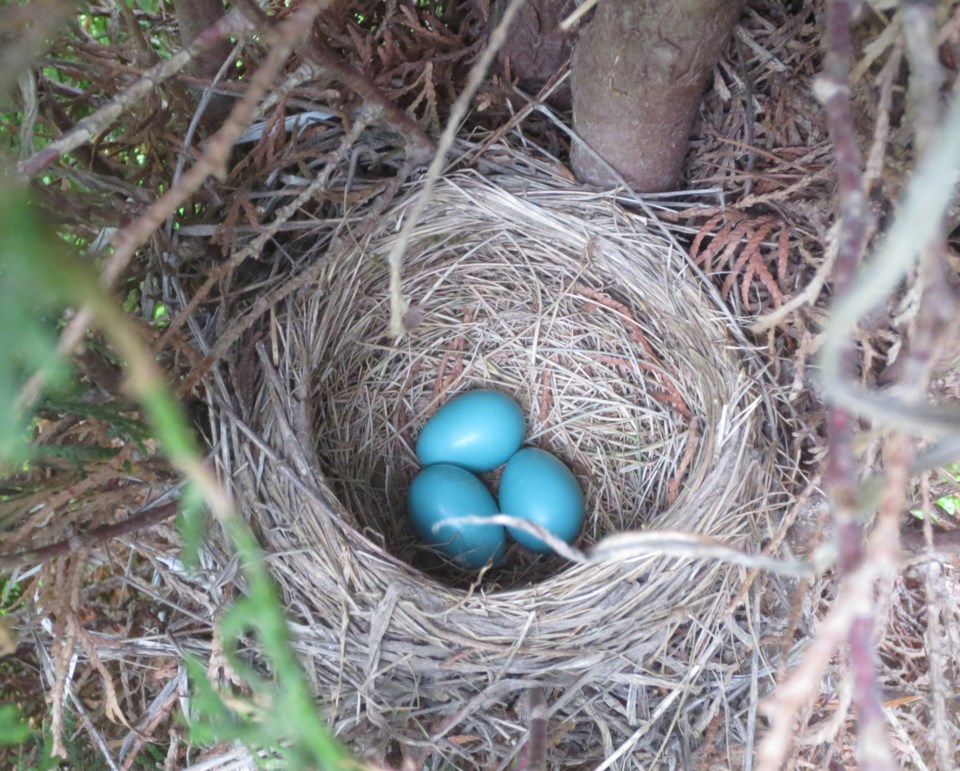In the chorus that is a living garden, our favourite section is the singing birds. A breeze through tall grass, the crunch of gravel underfoot and a frog croaking all play their part in this living soundtrack.
Nothing can stop us in our tracks like birdsong.
Our friends at Bird Studies Canada remind us that birds are an important indicator of the health of our environment. Healthy planet, healthy birds.
Our favourite way to promote and enjoy birds is bringing them right into the backyard by providing food and habitat. Here is how:
Plants are a one-stop shop for food and shelter. Birds prefer fruits and seeds right off the plant, and most birds either build their nests in a tree, shrub or stand of grass, or they make their nests from pieces of it.
Flowers such as asters, black-eyed Susan (Rudbeckia), echinacea (purple coneflower) and coreopsis not only add colour to your yard but attract a range of song birds from cardinals to colourful finches. Leave perennials standing throughout the winter so they can continue to be foraged and cut them down in the spring.
Native ornamental grasses attract sparrows, finches and other small birds that forage for seeds. Robins and sparrows pick up coarse blades to construct the main walls of their nest, then revisit for finer-textured blades to pad the soft lining of the interior.
We recommend planting big bluestem, little bluestem, northern sea oats or side oats.
Like your perennials, leave these grasses standing through the winter to provide habitat for overwintering species such as dark-eyed juncos.
Robins, waxwings and cardinals build nests in shrubs, eating and singing like old friends at an East Coast kitchen party. Mulberries and serviceberries are two medium-sized, summer-fruiting shrubs that are especially popular with this crowd. Flowering dogwood bears fruit in the fall to keep them coming, as does crab apple, which also fruits in the fall but holds its fruit into the winter.
Trees are the bird equivalent of a tall condo building, bustling with life. White oaks provide nesting opportunities to woodpeckers, jays and even wood ducks, and unlike other oaks, white oaks produce acorns every year.
Native tree species are found to support more bird life. We recommend red maple or black, red and white spruce, gray, white and yellow birch or black willow, if you have lots of space.
Once you have created a bountiful bird food-garden, supplement with the right bird feed.
Birds will forgive you for letting the feeders go empty. People worry that the birds depend on them for feeder-food. While a feeder helps bring birds to your yard, it will only ever be one of many food sources they depend on, so don’t race home from the cottage to fill your bird feeders.
Buy seed based on the birds you wish to attract. The following guidelines by BSC will help you understand what type of feed will attract the birds you want:
Black oil sunflower seed will attract cardinal, black-capped chickadee, mourning dove, dark-eyed junco, song sparrow and common grackle.
Suet and bird peanuts attract blue jay, red-breasted nuthatch, downy woodpecker, white-breasted nuthatch, hairy woodpecker. Avoid “human peanuts” as the salt is harmful to birds.
Nyjer/black oil sunflower will attract the smaller house finch, American goldfinch, purple finch, common redpoll, pine siskin.
With enough food and places to make nest, remember water. This is extremely important as birds, like humans, need to drink and bathe.
As you enjoy the bird chorus of the oasis in your yard, consider joining a “citizen science” initiative through BSC such as Project FeederWatch. Simply count the kinds and numbers of birds at your feeder and report it back for BSC to add to their database.
Mark Cullen is an expert gardener, author, broadcaster, tree advocate and holds the Order of Canada. His son Ben is a fourth-generation urban gardener and graduate of University of Guelph and Dalhousie University in Halifax. Follow them at markcullen.com and @markcullengardening..



